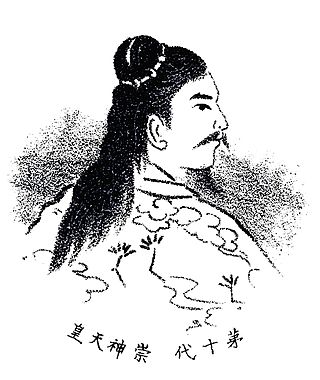Emperor Sujin
Emperor of Japan From Wikipedia, the free encyclopedia
Remove ads
Emperor Sujin (崇神天皇, Sujin-tennō) was the 10th emperor of Japan,[1] according to the traditional order of succession.[2] Historians consider Emperor Sujin to be a legendary person;[3] and the name Sujin-tennō was created for him posthumously by later generations.
No certain dates can be assigned to this emperor's life or reign.[4] The conventionally accepted names and sequence of the early emperors were not to be confirmed as "traditional" until the reign of Emperor Kammu, who was the 50th monarch of the Yamato dynasty.[5]
The Gukanshō records that Sujin ruled from the palace of Mizogaki-no-miya at Shiki in what will come to be known as Yamato province.[6]
Remove ads
Traditional history
Sujin is almost certainly a legend, but the Kojiki and Nihonshoki record his name and genealogy. He was the second son of Emperor Kaika.[7]
Some scholars question the existence of the first nine emperors. These critics consider Sujin to be the earliest to have actually existed.[8]
Events of Suijin's life
The limited information about Sujin does not imply that no such person ever existed. Very little information is available for study prior to the reign of the 29th monarch, Emperor Kimmei.[9]
Sujin was interested in agriculture and irrigation. He established a system of taxation.[10]
After his death
This emperor's official name after his death (his posthumous name) was regularized many centuries after the lifetime which was ascribed to Sujin.[11]
The actual site of his grave is not known. According to the Imperial Household Agency, this emperor is venerated at a memorial Shinto shrine (misasagi) at Nara.[1]
Remove ads
Related pages
References
Wikiwand - on
Seamless Wikipedia browsing. On steroids.
Remove ads

